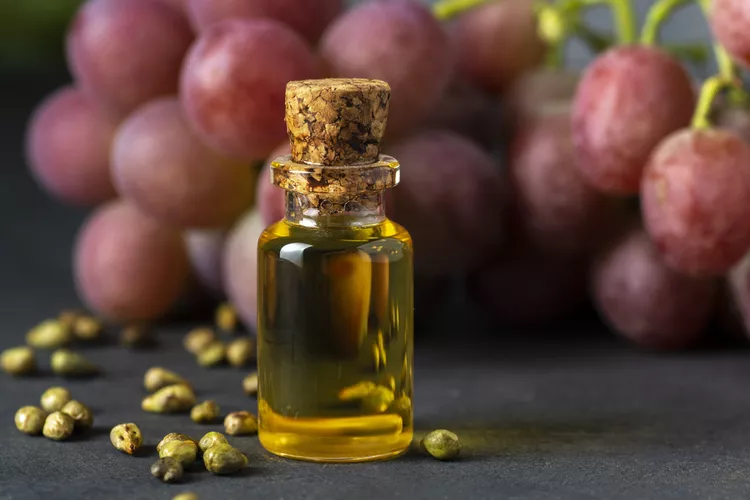Oil is one of the most essential ingredients in cooking. We can’t even imagine our culinary lives without using oil. There are various types of cooking oils in the world, and each oil has different uses and smoke points. It’s important to know these facts to enhance our cooking skills. Here are 10 commonly used oils in cooking.
1. Extra-Virgin Olive Oil
Extra-virgin olive oil is the highest quality and most flavorful olive oil available. It is made from the cold pressing of olives, without the use of heat or chemicals. Extra-virgin olive oil has a distinct fruity flavor, a greenish-golden color, and a rich aroma.
- Use
It is commonly used in cooking for frying foods and extra virgin olive oil is mostly used as a salad dressing and as an ingredient in salad dressings. It is also used with foods to be eaten cold. If uncompromised by heat, the flavor is stronger. It also can be used for sautéing.
- Fact
Boiling point: 299 °C (570 °F)
Smoke point: For extra virgin 190–215 °C (374–419 °F), for virgin 215 °C (419 °F), for refined 210 °C (410 °F)
Calories: 119 for 1 tbsp. (13.6g)
2. Coconut Oil

Coconut oil is basically made from pressed dried coconut flesh to extract the oil. It is a versatile cooking oil with a distinct flavor and a high smoke point, making it suitable for various cooking methods. You can find both refined and extra virgin coconut oil in the market. Virgin coconut oil (VCO) can be produced from fresh coconut milk, meat, or residue. Producing it from fresh meat involves either wet-milling or drying the residue and using a screw press to extract the oil.
- Use
It’s commonly used for frying and sautéing. It imparts a subtle coconut flavor to dishes, which can enhance the taste of certain cuisines, such as Thai or Indian. Beyond this, coconut oil has many more uses such as baking, popcorn, smoothies, and shakes. If you are health-conscious, you can add coconut oil to tea or coffee instead of sugar.
- Fact
Coconut oil is a white solid fat below around 25 °C (77 °F), and a clear thin liquid oil in warmer climates.
Smoke point: 175 °C (347 °F)
Calories: 117 for 1tbsp. (13.6g)
3. Canola Oil

Canola oil is a type of vegetable oil derived from the seeds of the canola plant, which is a variety of rapeseed. Canola oil has a light texture and a mild flavor, making it a versatile cooking oil. The oil has a relatively high smoke point, which means it can be used for frying and high-heat cooking methods without breaking down and producing harmful compounds.
- Use
Canola oil is commonly used in cooking and baking due to its neutral flavor and ability to blend well with other ingredients. It can be used for sautéing, frying, grilling, roasting, and baking. It’s also frequently used in salad dressings and marinades.
- Fact
Boling point: 204°C (400°F)
Smoke point: 204-232°C (400-450°F), depending on the refinement and quality of the oil.
Calories: 120 for 1 tbsp. (13.6g)
4. Sunflower Oil

Sunflower oil is a widely used oil extracted from sunflower seeds. It is pale yellow in color with a mild flavor, making it suitable for a variety of culinary applications.
- Use
Sunflower oil commonly used for frying, sautéing and baking. Its mild taste makes it a good base for homemade salad dressings. It can be used as a base for marinades due to its light flavor. During making of homemade mayonnaise sunflower oil can be a base.
- Fact
Boiling point: 227°C (440°F)
Smoke point: Higher 232°C to 246°C (450°F to 475°F) refined oil suitable for frying and lower 107°C to 160°C (225°F to 320°F) unrefined oil suitable for low to medium temperature cooking.
Calories: 120 for 1 tbsp. (13.6g)
5. Peanut Oil

Peanut oil, also known as groundnut oil, is a popular vegetable oil derived from peanuts. It has a pale yellow color and a nutty aroma, which adds a distinctive flavor to dishes. Peanut oil comes in various forms, including refined, unrefined, and roasted.
- Use
Peanut oil is commonly used in cooking for frying and sautéing. It is widely used in Asian cooking, particularly in dishes like stir-fries, noodles, and fried rice. It’s also ideal for dressing salads to add a nutty flavor.
- Fact
Boiling point: 230°C to 240°C (446°F to 464°F)
Smoke point: 232°C to 246°C (450°F to 475°F)
Calories: 119 for 1 tbsp. (13.6g)
6. Avocado Oil

Avocado oil is a nutrient-rich oil derived from the pulp of avocados. Avocado oil is typically greenish-yellow in color and has a mild, buttery flavor. It’s rich in monounsaturated fats, particularly oleic acid, as well as vitamins E and K.
- Use
Avocado oil can be used as a base for marinades, providing a healthy fat source and aiding in tenderizing meats and vegetables. It is also suitable for various cooking methods such as frying, sautéing, and baking.
- Fact
Boiling point: 270°C (520°F)
Smoke point: 250°C to 271°C (480°F to 520°F)
Calories: 124 for 1 tbsp. (13.6g)
7. Grapeseed Oil

Grapeseed oil is a light, odorless oil extracted from the seeds of grapes. Grape seed oil is a vegetable oil derived from the seeds of grapes. A by-product of the winemaking industry, it is typically used for edible applications. Winemaking accounts for 90% of grape cultivation, with the seeds of the plant serving as a by-product that can be pressed for oil. Grapeseed oil production primarily occurs in wine-growing regions, especially around the Mediterranean Sea.
- Use
Grapeseed oil is versatile and can be used for various cooking methods, including frying, sautéing, baking, and salad dressings. Its neutral flavor makes it suitable for dishes where you don’t want the oil to impart much taste.
- Fact
Boiling point: 216°C to 230°C (420°F to 446°F)
Smoke point: 215°C to 252°C (419°F to 486°F)
Calories: 120 for 1 tbsp. (13.6g)
8. Sesame Oil

Sesame oil is an aromatic oil derived from sesame seeds, which are native to Africa and India. Sesame oil comes in two main types: toasted (dark) sesame oil and untoasted (light) sesame oil. Toasted sesame oil is made from toasted sesame seeds and has a rich, nutty flavor and dark color, while untoasted sesame oil is made from untoasted seeds and has a lighter flavor and color.
- Use
Sesame oil is a staple ingredient in Asian cuisine and is used for stir-frying, sautéing, and deep-frying. It adds a distinctive nutty flavor to dishes. Both toasted and untoasted sesame oil are used as flavor enhancers and finishing oils in various dishes, such as soups, noodles, salads, and marinades. Toasted sesame oil is often mixed with soy sauce or other ingredients to create a flavorful dipping sauce for dumplings, spring rolls, or sushi.
- Fact
Boiling point: 177°C to 232°C (350°F to 450°F)
Smoke point: For toasted Sesame oil, it’s around 177°C to 190°C (350°F to 375°F) and untoasted Sesame oil, usually around 232°C to 260°C (450°F to 500°F).
Calories: 120 for 1 tbsp. (13.6g)
9. Mustard Oil

Mustard oil is a widely used oil extracted from mustard seeds. It has a distinct pungent flavor and a characteristic aroma. It is extracted from the seeds of various mustard plants, including black mustard, brown mustard, and white mustard. The oil can range in color from pale yellow to dark amber, depending on the type of mustard seeds used and the method of extraction.
- Use
Mustard oil is commonly used in Indian, Bangladeshi, and Pakistani cuisine for cooking, frying, and tempering. It adds a unique flavor and aroma to dishes, especially in traditional recipes like curries, vegetable fillings, and pickles. Mustard oil is often used as a base for marinades, particularly in grilled or barbecued dishes, as it helps to tenderize meats and infuse them with flavor. Additionally, mustard oil is a key ingredient in salad dressings, providing a spicy kick and enhancing the overall taste of the dish.
- Fact
Boiling point: 250°C to 310°C (482°F to 590°F)
Smoke point: 177°C to 250°C (350°F to 482°F)
Calories: 124 for 1 tbsp. (13.6g)
10. Ghee

Ghee is a type of clarified butter that originated in ancient India and is commonly used in South Asian and Middle Eastern cuisines. Ghee is made by simmering butter, which separates the milk solids from the fat. The milk solids are then removed, leaving behind pure butterfat. Ghee has a rich, nutty flavor and a golden color.
- Use
Ghee is used as a cooking fat, similar to butter or oil. It’s popular for sautéing, frying, and baking due to its high smoke point and rich flavor. It’s also used in traditional Indian cooking for making curries, lentil dishes, and desserts. Additionally, ghee is used in Ayurvedic medicine and is considered beneficial for health when consumed in moderation.
- Fact
Boiling point: 150°C (302°F)
Smoke point: 250°C (482°F)
Calories: 120 for 1 tbsp. (13.6g)
